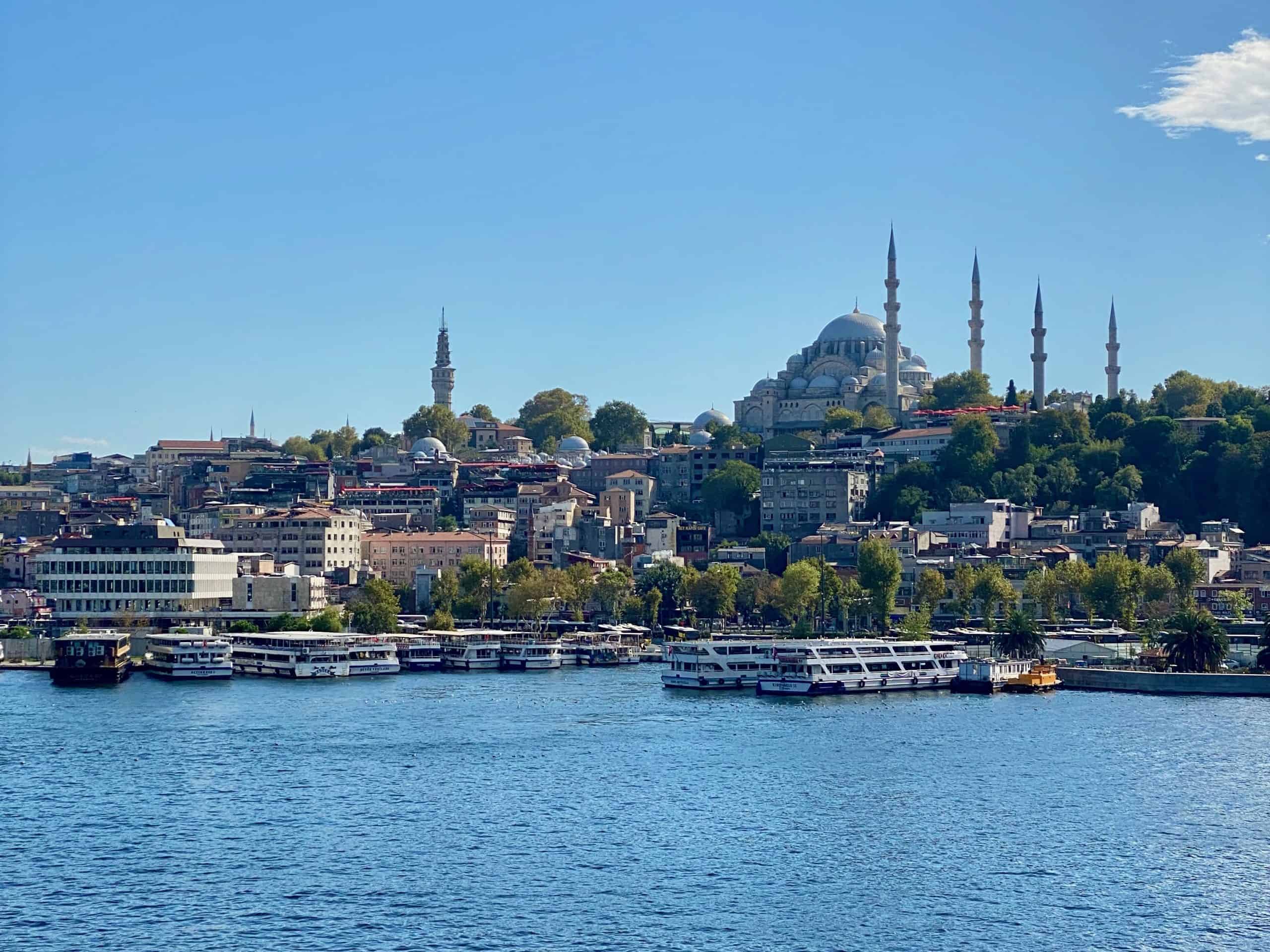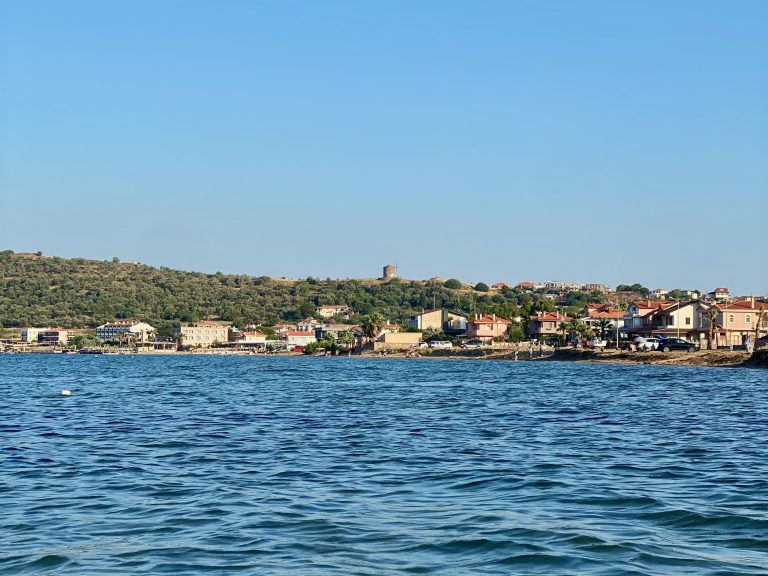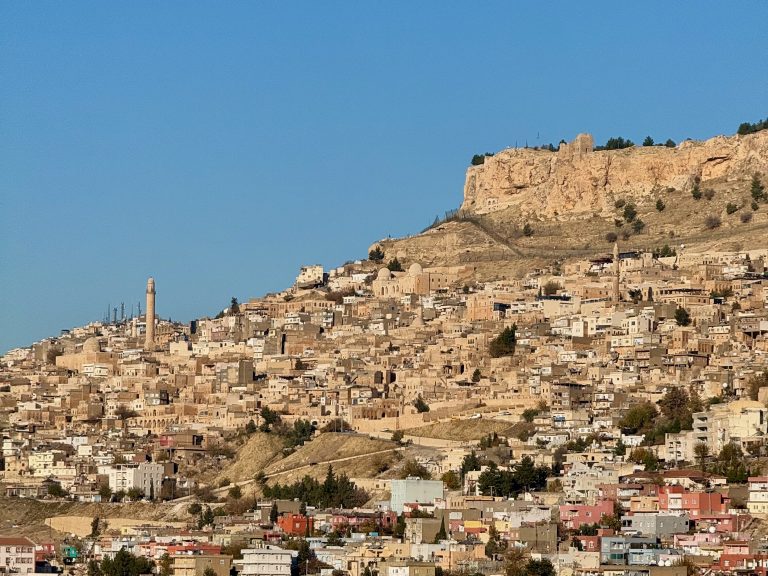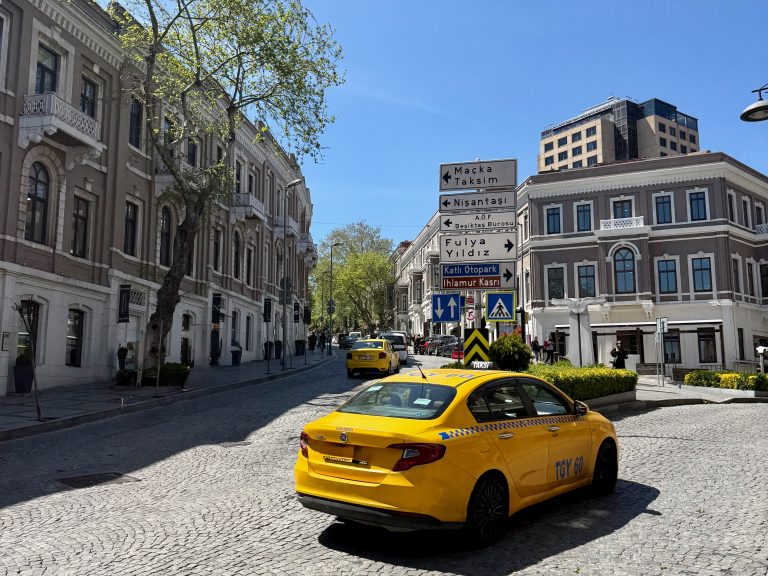3 Days In Istanbul: Perfect Itinerary Ideas (2025)

Often referred to as the “Pearl of the Orient,” Istanbul is a city with a rich and intricate past that has left behind monuments, artifacts, and cultural influences from all those who have conquered, inhabited, or used it as a refuge throughout time.
Connecting East and West, today, a short ferry ride across its turquoise waters can have you jumping from Europe to Asia or vice versa.
While it can be daunting to cover any city in 3 days, especially one as vast as Istanbul, the itinerary below aims to offer the best glimpse of the infamous city.
Ideal Itinerary for 3 Days in Istanbul
An ideal visit to Istanbul is a combination of witnessing the craft of architecture through some of its most iconic monuments, savoring the cuisine, and taking time to stroll down its colorful streets.
This itinerary for 3 days in Istanbul will provide the top landmarks, as well as transportation and food options to help ease your planning!
It is one perfected over the years while showing friends and family charming Istanbul.
Day 1: Hagia Sophia, Sultanahmet Park, Blue Mosque, Topkapi Palace, Bosphorus Tour or Ferry to the Asian Side
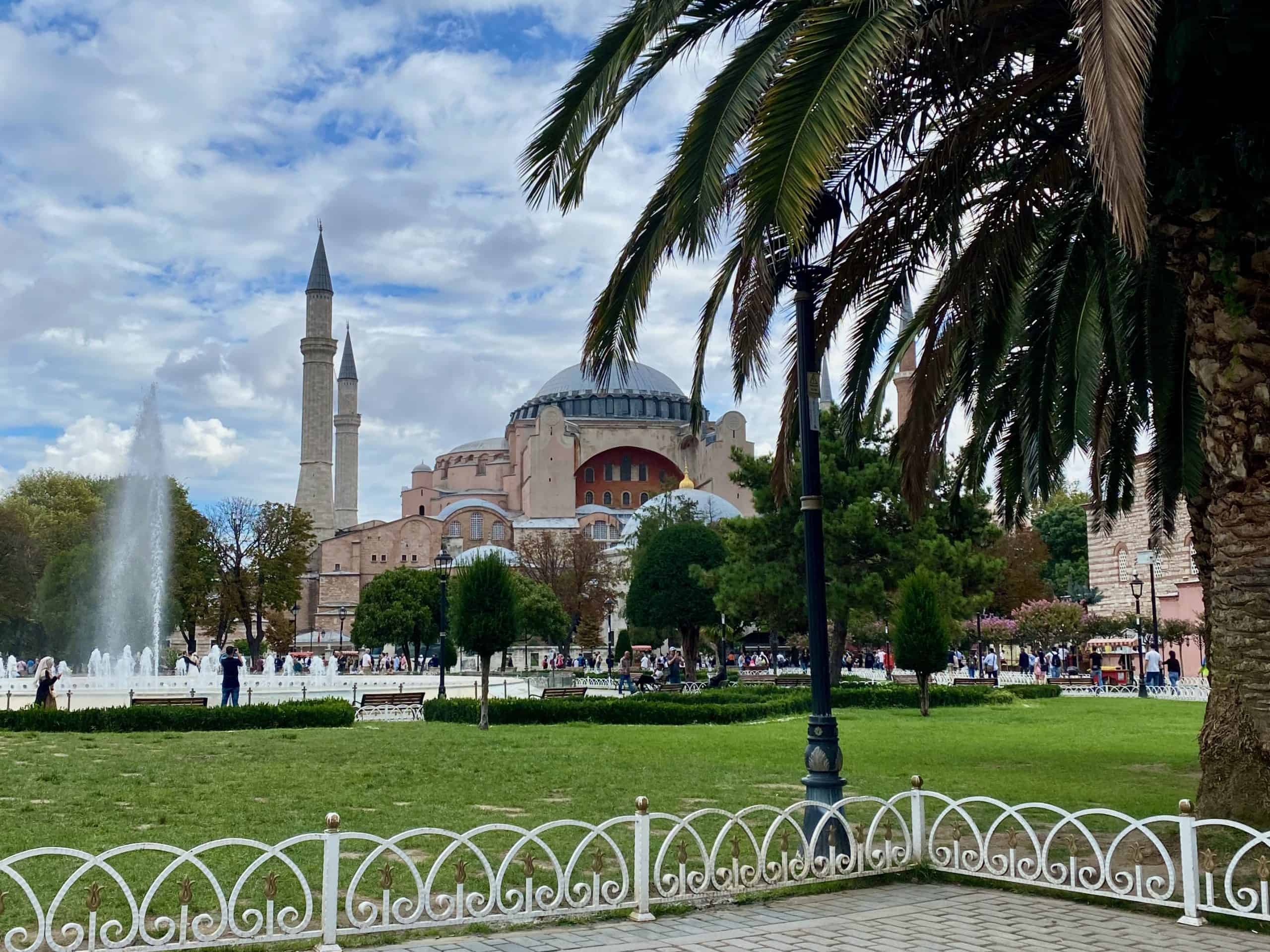
Historical Peninsula – Eminönü
The first day will be spent exploring the Historical Peninsula, also known as Eminönü. This area houses some of Istanbul’s most iconic sites, from the coveted Hagia Sophia to the legendary Grand Bazaar.
On this day, the easiest way to travel between the sites will be by foot, the distance will range between 5-10 minutes.
The starting point will be Sultanahmet Park. The closest station is Sultanahmet, reachable by the T1 tram.
How to reach Sultanahmet:
- From Galata, Cihangir, and Karaköy: take the T1 tram from Galata Bridge or Tophane stations to the Sultanahmet station
- From Beşiktaş, Üsküdar, and Kadıköy: take the ferry to Eminönü from the local pier (i.e., Beşiktaş Pier, Üsküdar Pier, or Kadıköy Pier ), then the T1 tram from Eminönü station to Sultanahmet station
It will be particularly important to dress modestly on this day, given that the itinerary includes a visit to two grand mosques of Istanbul. But not to worry, if you forgot to do so, they will provide or allow you to purchase the appropriate garments before entering.
Tips for visiting the grand mosques of Istanbul:
- Mosques close to visitors during prayer hours, so it is important to check the prayer schedule during the time of your visit. The Islamic faith calls to pray five times a day.
- Mosques require that both women and men dress modestly and appropriately to be allowed entrance. For men, that means covered knees and shoulders, and for women, it means covered knees, shoulders, and head.
- Pro tip for women: carry a light scarf or pashmina during your trip in case you unexpectedly want to enter a mosque.
Hagia Sophia
The Hagia Sophia is not only one of the most iconic sites of the legendary city of Istanbul, it is also representative of the vast changes the city has endured.
Originally a Byzantine church built between 532–537 CE, it was converted into a mosque upon the Ottoman conquest of Constantinople in 1453 CE. With the fall of the Ottoman Empire and the rise of the secular Turkish Republic it would be converted into a museum to then be converted back to a mosque in 2020 by Turkey’s current president. Most recently, it serves as both a mosque and a museum for both believers and visitors.
The beauty of the Hagia Sophia is evident as you wait to enter, but becomes astounding once inside. The low-hanging lights, the perfectly constructed domes, its firm marble columns, and the mosaics offer a unique and special experience.
Given its popularity this site usually generates the highest volume of visitors and therefore longer queues. If possible, arrive early in the day to avoid waiting too long. We found that the crowds were much smaller in the morning.
Tickets to the Hagia Sophia can be purchased onsite (about 25€) but expect to queue.
There is also the option to purchase tickets from sites like GetYourGuide.com ahead of time. These tickets will usually include a ‘skip-the-line’ benefit, which can save you time, especially when only spending 72 hours in Istanbul.
Sultanahmet Park
Enjoy some time walking around Sultanahmet park, located between the Hagia Sophia and the Blue Mosque.
Here you will likely see the traditional red carts selling Simit, a traditional Turkish pastry that resembles a bagel. There will be plenty of opportunities to try this pastry during your trip as these vendors cover every corner of the city, but if you would like to enjoy one while looking at the spectacular view of the grand mosques, this is your chance!
There is also the option to take a quick break to have some Turkish Tea or Turkish Coffee at a shop on Sultanahmet Square located beside the Blue Mosque.
Blue Mosque (Sultanahmet Mosque)
Located across from the Hagia Sophia and beside Sultanahmet Park, the Blue Mosque is perhaps the most iconic in Istanbul.
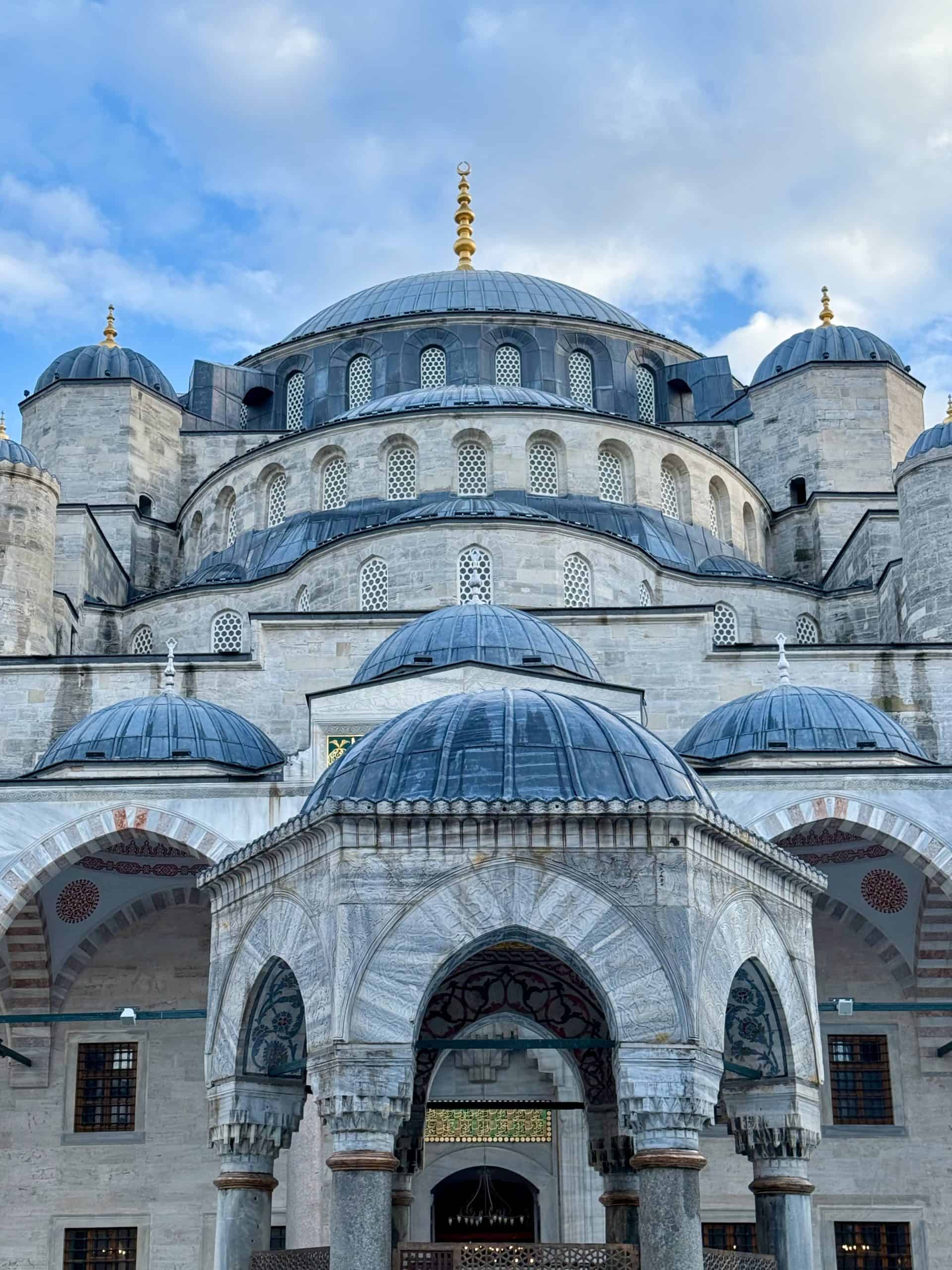
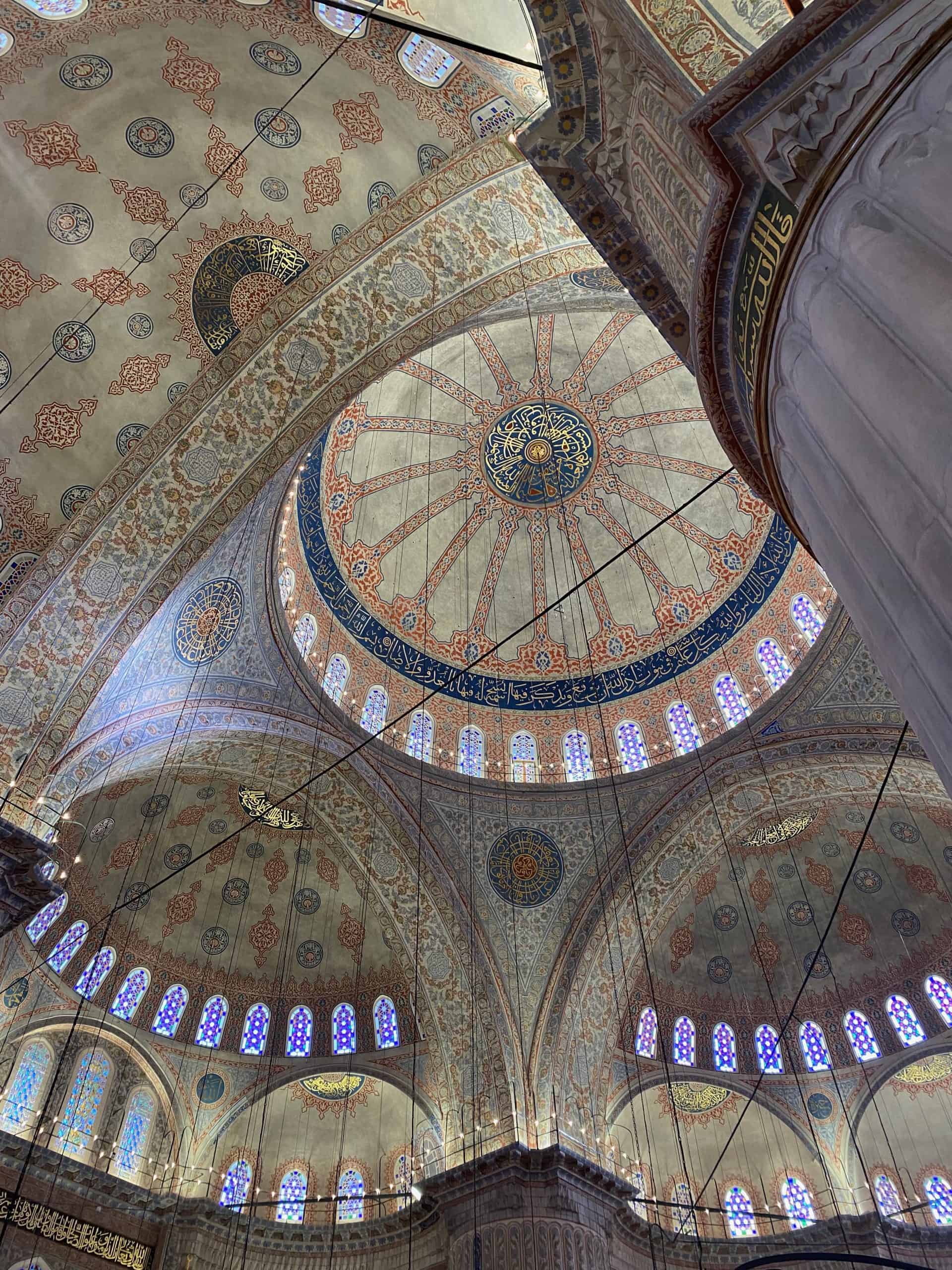
The original name is Sultanahmet Mosque, but amongst travelers it is more commonly known as the Blue Mosque. The name comes from its exquisite decoration mostly consisting of accentuated hues of blue. The story tells that Sultan Ahmed I commissioned the monument to assert himself and the Ottoman empire by constructing a structure to rival the famed Hagia Sophia.
The entrance to the Blue Mosque is free, but there may still be a queue to enter, given the popularity.
Topkapı Palace
Topkapı Palace is a short walk from the Blue Mosque. In the past, it served as the main residence for Ottoman Sultans until the 19th century, when more modern European-style palaces were built, such as Dolmabahçe Palace and Çırağan Palace.
The palace is a complex, consisting of multiple structures, which is an important detail to consider when choosing what ticket to purchase.
The three main structures include Topkapı Palace, the harem, and the Hagia Irene.
The ticket for the Topkapı Palace only includes the entrance to the main palace grounds. Tickets to enter the harem or the Hagia Irene can be purchased separately, or there is the option to purchase a ‘Combined’ ticket, which includes the three.
Ticket counters are located within the first courtyard of the palace. When you arrive, you will see the Hagia Irene on one end, and on the other, the Middle Gate, which marks the official ticketed entrance to palace grounds. The harem is located inside the ticketed grounds, but you will still need to present a ticket to tour inside.
Keep in mind that it can take several hours to tour the palace. On my first visit, I left the harem until the end and nearly ran out of time, so the second time I made sure to start my tour there.
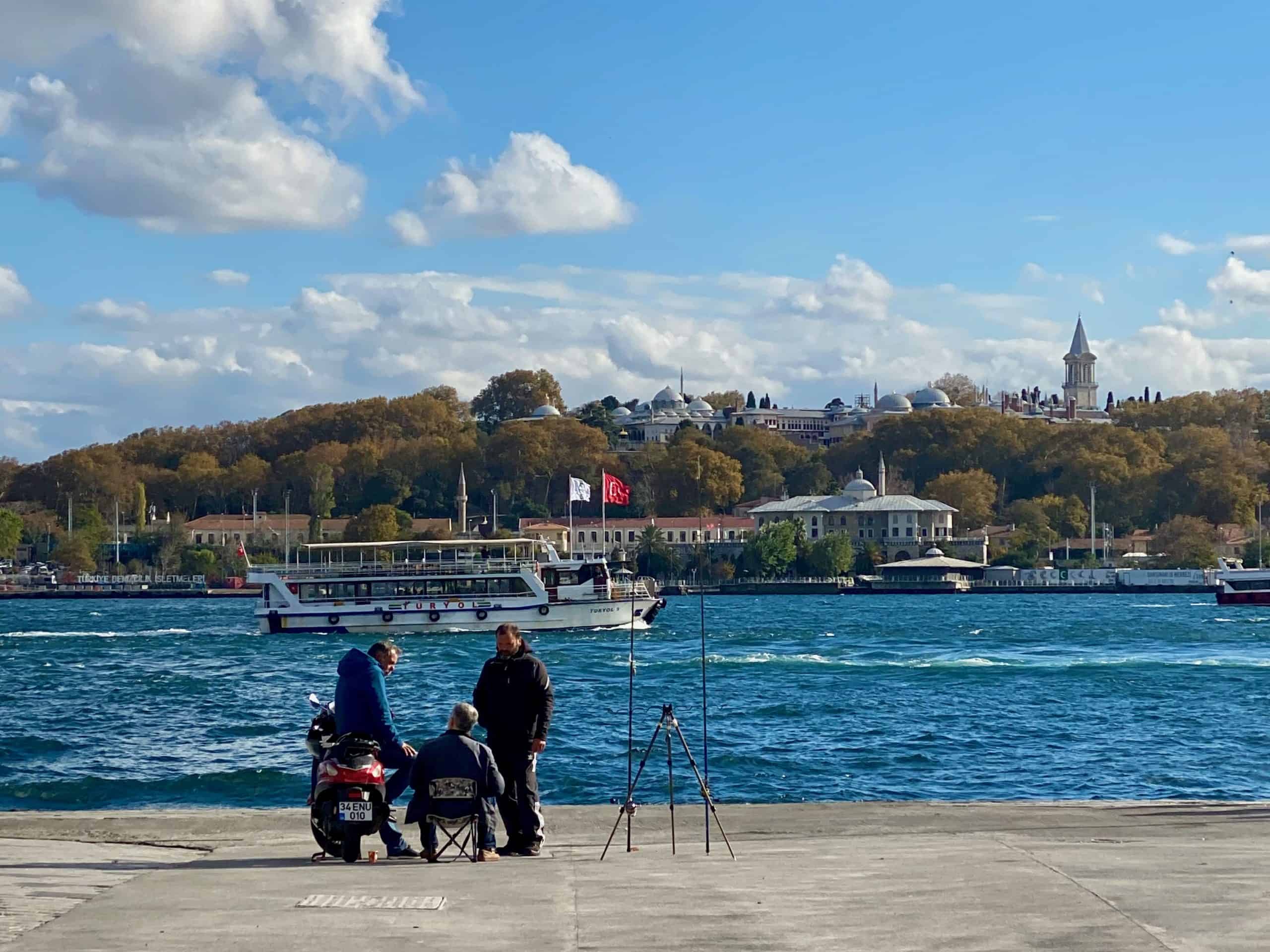
Topkapı Palace Highlights:
- Entrance includes access to four courtyards and the treasury.
- The fourth courtyard includes one of the best viewpoints of the city.
- The third courtyard includes the royal treasury that features magnificent artifacts with rare jewels.
- The second courtyard includes the royal kitchens and a collection of Chinese celadon porcelain. It was believed that the color of the porcelain would be altered when exposed to poison which was a common concern in the royal court.
Harem
- Entrance to the harem must be purchased in addition to the ticket for Topkapı Palace.
- Harems are almost mythical, having been kept away from the foreign gaze, and all sorts of stories emerged throughout time. In reality, the harem housed the mother, wives, concubines, and children of the Sultan.
- Topkapı’s harem offers a glimpse into life in the harem, an entrance guarded by eunuchs, rooms covered in exquisite Iznik tiles, and rooms to train concubines in the fine arts.
Hagia Irene
- Entrance includes access to the Hagia Irene Byzantine church.
- Hagia Irene is another example of Byzantine architecture. It is also one of the few churches never converted to a mosque.
Optional: Basilica Cistern
Usually, a visit to the Basilica Cistern does not take very long, provided you purchase tickets ahead of time.
Neighboring the Hagia Sophia, the Basilica Cistern is known for being one of the largest Byzantine cisterns that remain. It was used to provide clean water to the Byzantine Great Palace and then the Ottoman Topkapı Palace. Left and forgotten for a few centuries, it was opened to the public after extensive restoration in 1987.
Today, the cistern still holds water, although no longer to supply consumption. It is composed of 336 columns, some of which are interestingly decorated. One known as the Column of Tears and two featuring the head of a gorgon or Medusa herself.
There are many stories and theories surrounding the gorgon heads found in the Basilica Cistern. Some suggest they were placed as protection from the evil eye.
Ferry to the Asian Side or Bosphorus Tour
After a day filled with mesmerizing mosaics, colorful tiles, and antique artifacts, clear your mind with an enchanting ride on the Bosphorus. There is the option to enjoy a Bosphorus Tour or take a ferry to the Asian side of the city.
Bosphorus Tour
Bosphorus Tours often take off from the Golden Horn and will make their way up the Bosphorus towards the Black Sea. There are a multitude of options, ranging from ones operated by the city’s public ferry companies to those offering dinner service and entertainment.
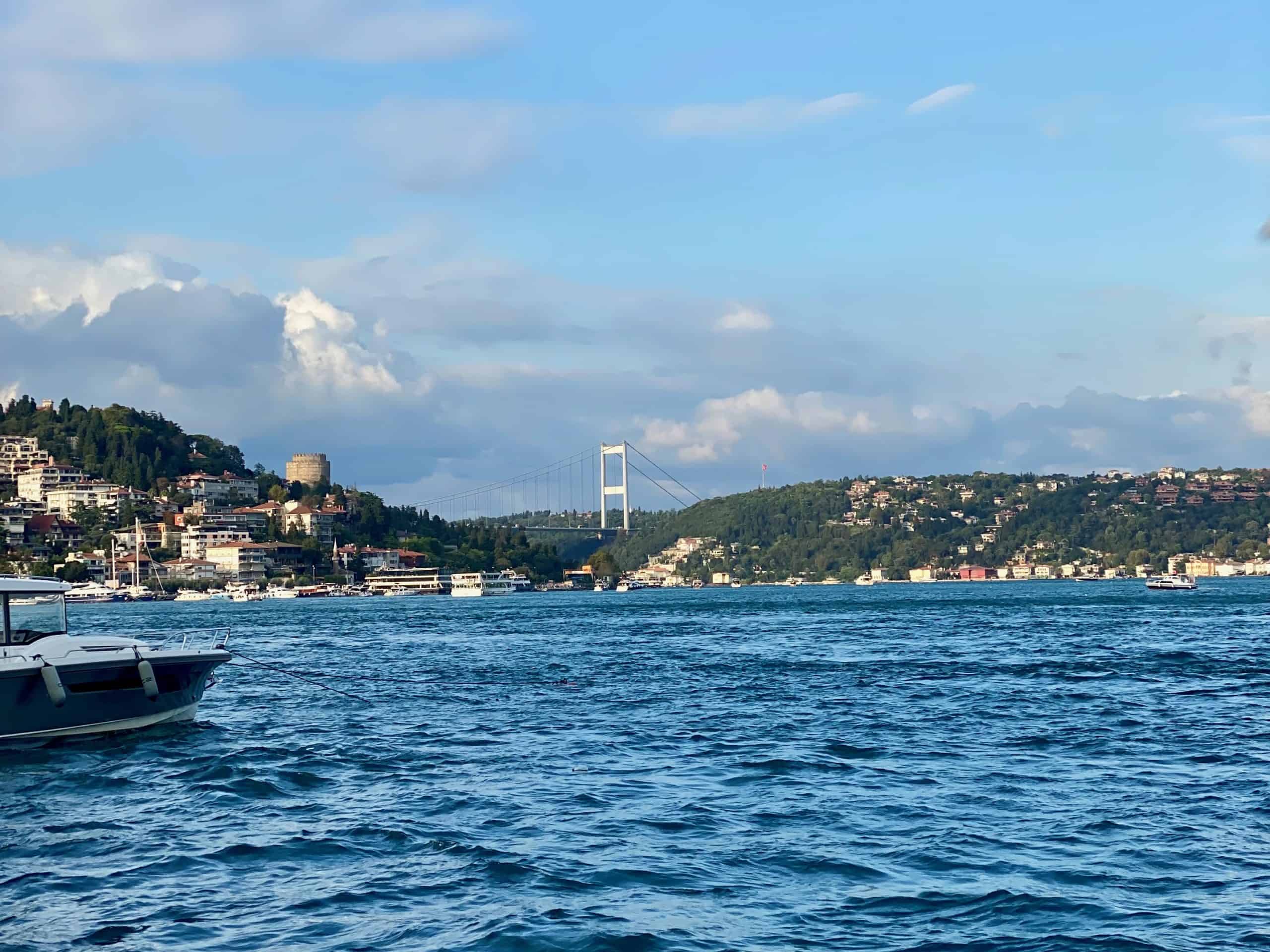
Turyol is a private ferry operator that offers a convenient option for those looking to take a ride down the Bosphorus without committing too much time or to dinner and a show.
The ride will be about 1.5 hrs. It can be boarded in either Eminönü or Karaköy and will loop back after reaching the Fatih Sultan Mehmet Bridge.
Sites Include: Galata Tower, Topkapi Palace, Dolmabahce Palace, Ciragan Palace, Bosphorus Bridge, Savarona Yacht, Rumeli Hisari, Fatih Sultan Mehmet Bridge, Anadolu Hisari, Kuleli Military High School, Beylerbeyi Palace, Maiden’s Tower
Ferry to the Asian Side – Explore Kadıköy
Located on the Asian side of the city, Kadıköy is one of the trendiest areas of Istanbul. It houses a variety of charming cafes, meyhane-style restaurants, outdoor bars, and seaside walking routes.
Ferries depart from Eminönü or Karaköy every 20 minutes.
The Asian or Anatolian part of Istanbul reserves a more local feel when compared to the European side, which tends to be more touristic. For this reason, it offers a good opportunity for a more immersive experience of Turkish culture.
Ferries arrive at the Kadıköy Pier only a short walk from the Kadıköy Fish Market. As the name suggests, the market is known for its fish, but there are many other shops selling different delicacies, and everything you might need to fill a kitchen. It is worth a visit to see the picturesque stands brimming with fresh fish, fruit, and spices.
Once you’ve had your fill, make your way to Moda Street. This is the main street of the Moda area in Kadıköy, known for its relaxed and artistic flair. Use this street to slowly stroll, have a look around, and you will naturally reach its end at Moda Pier (about a 20-minute walk).
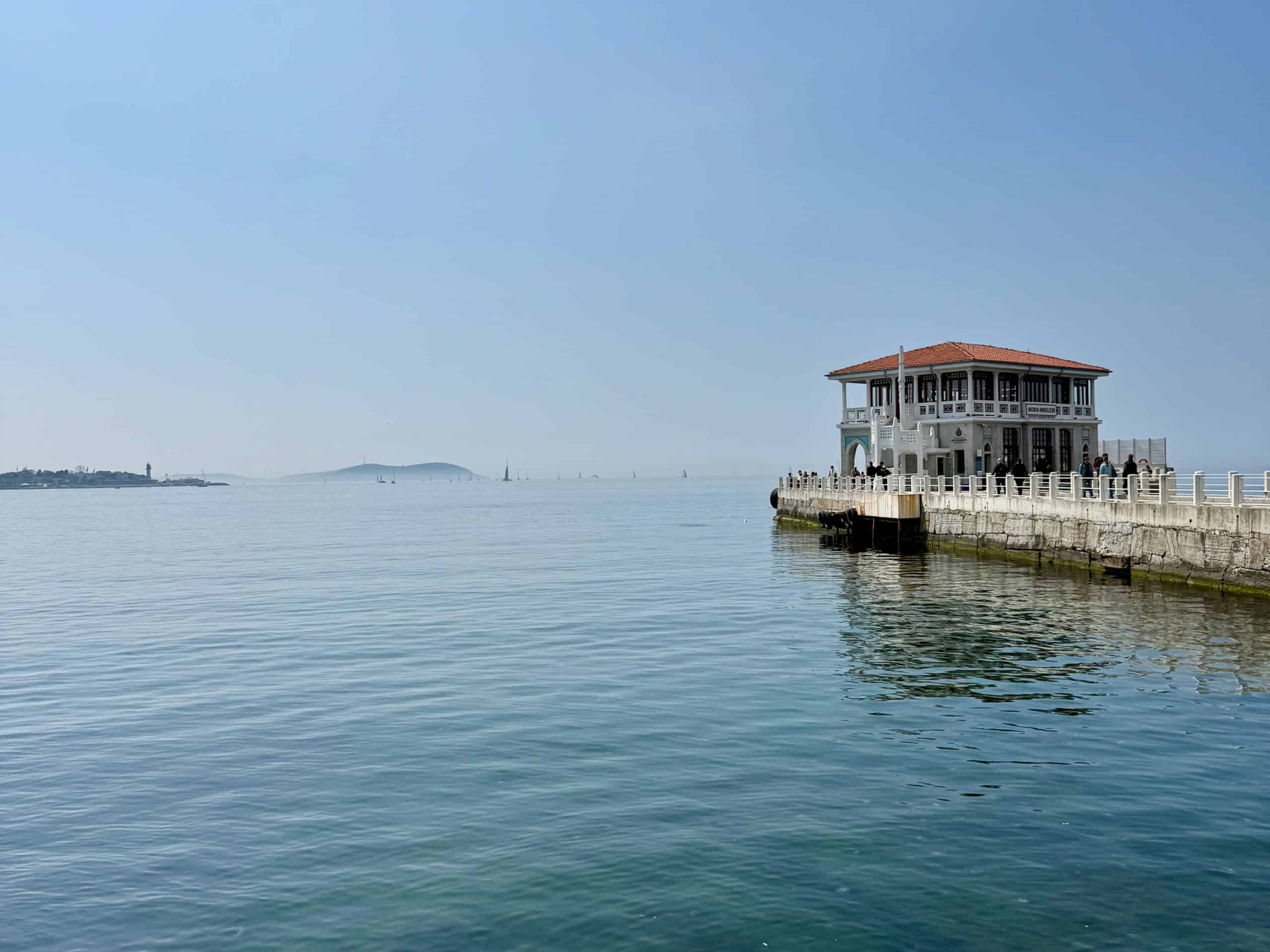
Resist the urge to have dinner in one of the many restaurants you encounter on your walk and instead head back to the Fish Market area to dine at a meyhane.
A meyhane is a traditional Turkish restaurant that takes the style of a tavern serving meze and rakı. Meze are appetizer-sized, tapas-like plates served alongside the traditional Turkish anise liquor known as rakı.
A typical experience involves a table with multiple mezes, a bottle of rakı, conversation amongst friends, and in many mayhanes, eventually traditional, sometimes nostalgic, Turkish music.
Meyhane is a unique experience and a great way to spend an evening in Istanbul. In Kadıköy, many can be found on Güneşli Bahçe Street.
Please note that meyhanes like taverns offer a traditional yet often simple menu. For those looking for a more elevated culinary experience, instead, try restaurants like Ciya Sofrasi or Muutto Street Food.
Day 2: Cihangir and Cukurcuma, Dolmabahce, Galata Tower, Istiklal Street
The second day will mostly be spent in the Beyoğlu area, with the exception of Dolmabahçe Palace. The area of Beyoğlu is particularly hilly, so try to opt for comfortable footwear.
The starting point will be Cihangir. The closest station is Tophane, reachable by the T1 tram.
How to reach Tophane:
- From Eminönü: take the T1 tram from nearest station to Tophane station
- From Beşiktaş: take the bus from Beşiktaş Square to Tophane
- Üsküdar and Kadıköy: take the ferry to Karaköy from the local pier then walk towards Tophane park
Cihangir and Cukurcuma
Begin the day with a traditional Turkish breakfast at Van Kahvaltı Evi in Cihangir.
Turkish breakfast is a serious affair. The table will be spread with rich flavors and colorful plates of bread, eggs, cheese, tomatoes, cucumbers, olives, multiple marmalades, cream, honey, and, of course, Turkish tea.
Cihangir and Çukurcuma have a bohemian feel and have for decades been associated with expats and intellectuals.
Çukurcuma is known for its antique shops replete with things from the many civilizations that have graced Istanbul. It is also home to the Museum of Innocence, created after the novel of the same name by Nobel Prize-winning Turkish novelist Orhan Pamuk. The museum is worth a visit, and the novel is certainly worth a read.
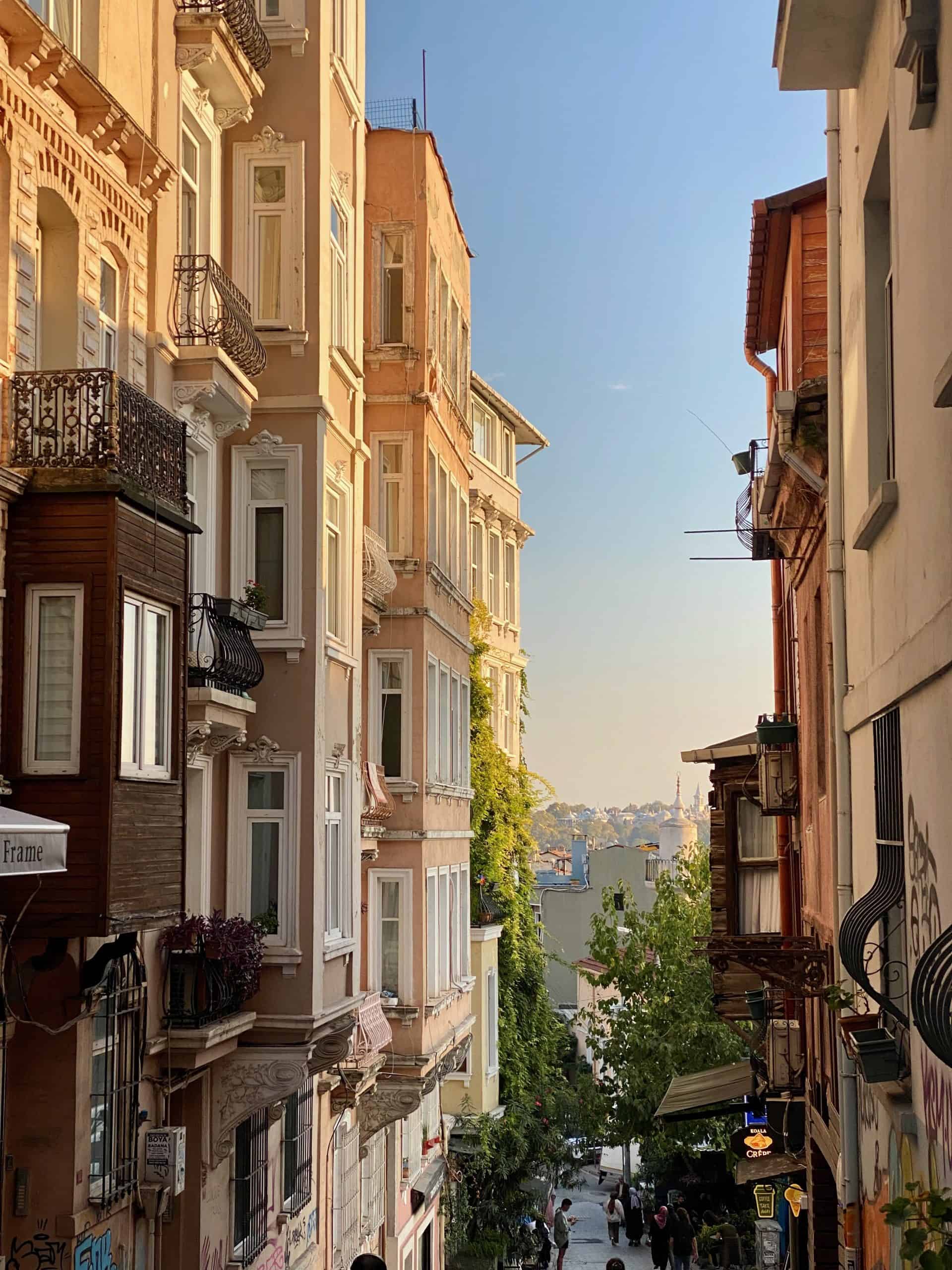
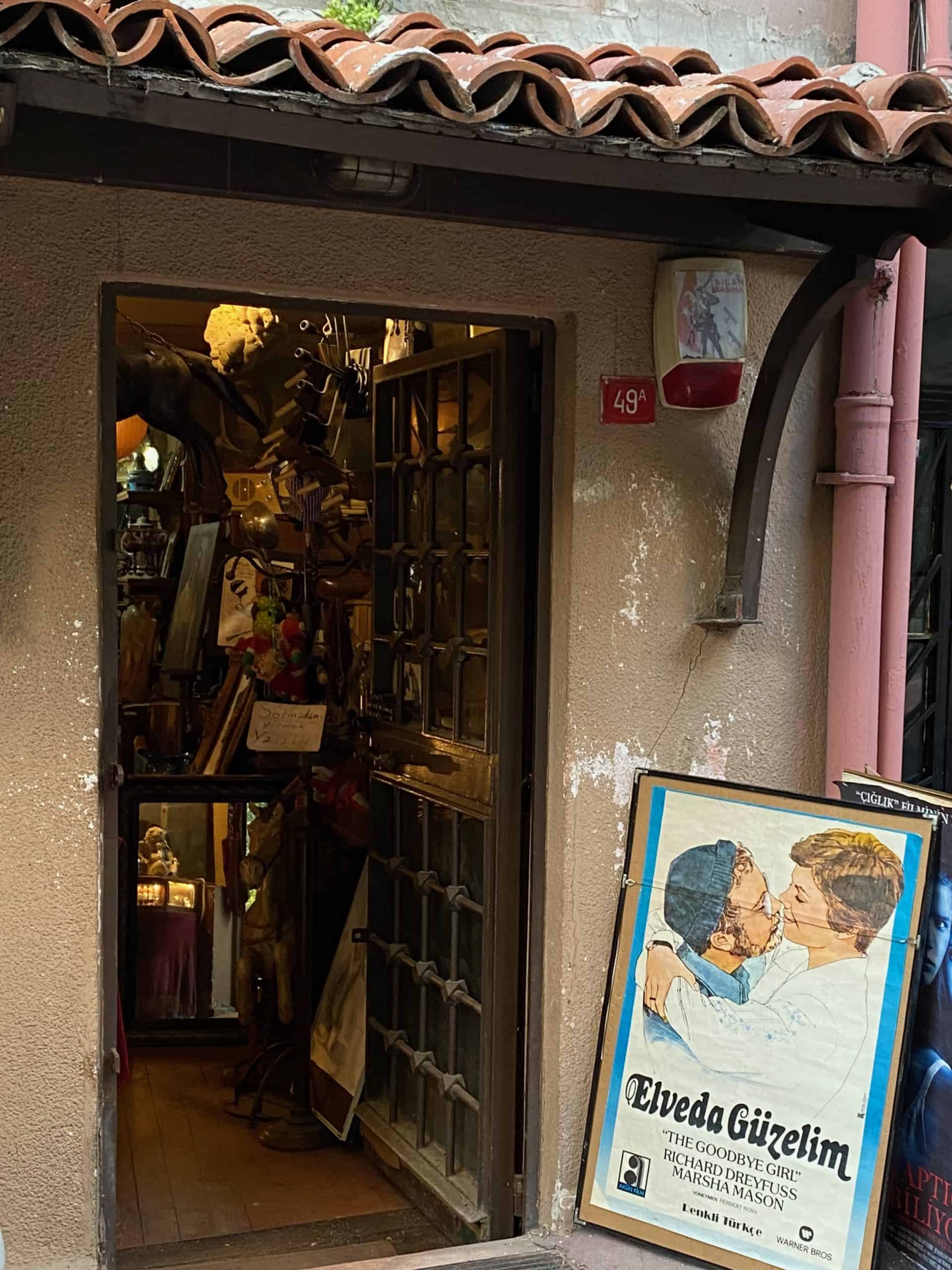
Cihangir is considered one of the hippest neighborhoods in Istanbul. As you walk, it may seem that there is a coffee shop on every corner. There are also many shops selling more creative versions of Turkish artisanal crafts that make for rather special souvenirs.
After breakfast, stroll around a few of the streets of the area:
- Defterdar Ykş.
- Faik Paşa Cd.
- Çukur Cuma Cd.
- Boğazkesen Cd.
Dolmabahçe Palace
Head back to the T1 tram Tophane station to make your way to Dolmabahçe Palace. The stop for the palace will be Kabataş station. From there, it will be a short 5-10 minute walk to the entrance of Dolmabahçe Palace.
An impressive clock tower measuring 27m will welcome you to the palace grounds. The tickets can be purchased at a counter near the official entrance.
Dolmabahçe Palace is the largest palace in Turkey and became the official residence of Ottoman rulers after Sultan Abdulmejid I moved his family from Topkapı in 1856. After the fall of the Ottoman Empire, the palace was used by Mustafa Kemal Atatürk as the official presidential residence. After his death, the palace ceased to function as a residence and was turned into a museum.
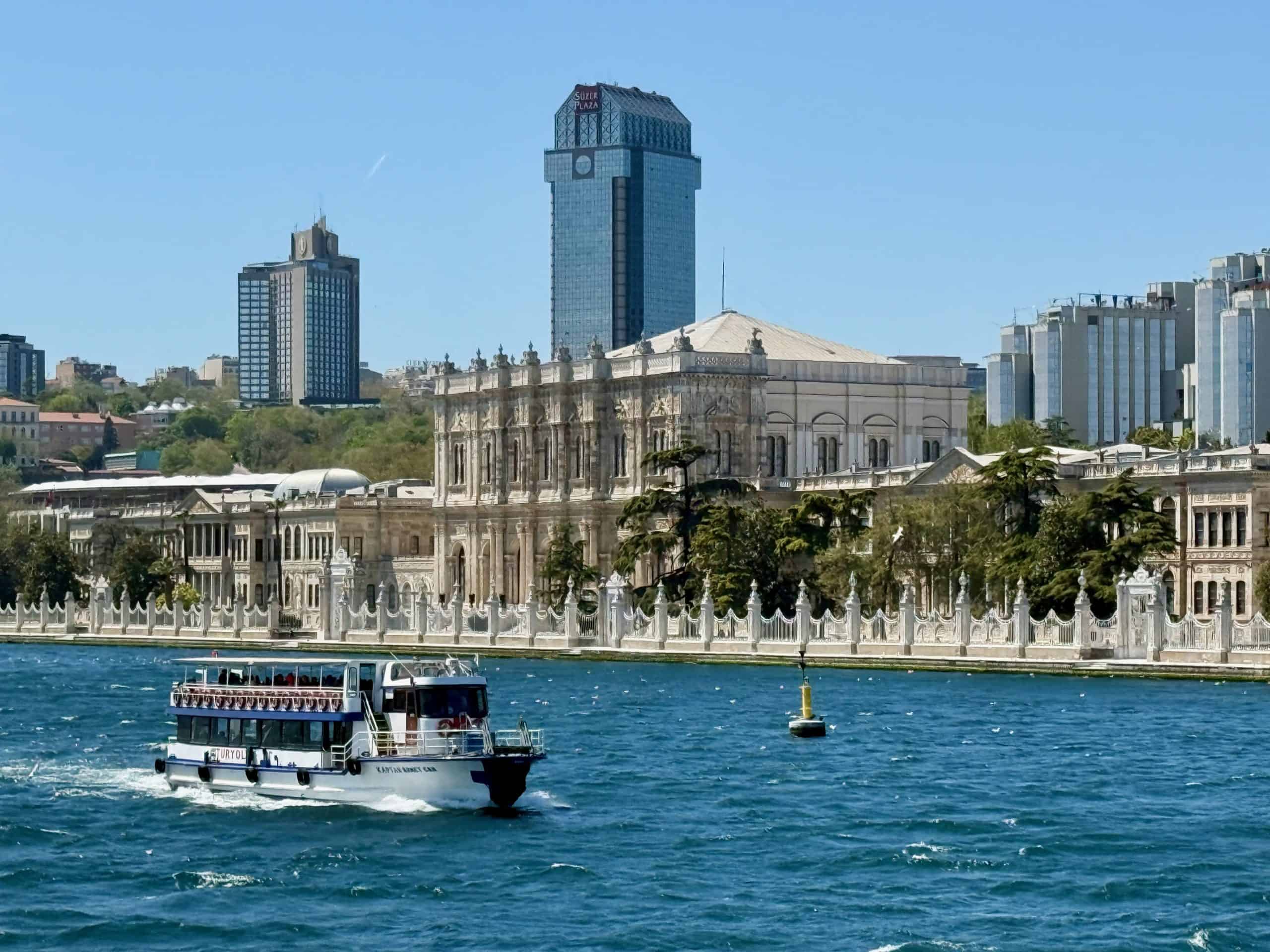
The palace is a prime example of European influence and the Ottoman mastery of architecture and decor.
Host to the largest crystal chandelier in the world, ceilings and walls decorated in magnificent gems, elegant Hereke carpets lining its floors, and over 200 oil paintings, Dolmabahçe is a grand exhibit of Ottoman opulence.
Located by the sea, its views of the Bosphorus are equally impressive.
Galata Tower
Head back to the T1 tram Kabataş station to return to the Galata area, the best stop to get off at will be Galata Bridge station.
From the bridge, walk towards the Camondo Stairs for a more scenic route to the tower. The stairs were created by a prominent family in banking, and it is said that they were constructed as a pleasant shortcut from Pera to the street of banks.
The Galata Tower is only a 5-minute walk from that point.
Tickets are available for sale before entering, but it is recommended to purchase them ahead of time as the queue to enter the tower is typically long.
One of the city’s most iconic landmarks, the Galata Tower, has held multiple functions throughout time. The base is what remains of the earliest Byzantine structure upon which the Genoese constructed the earliest building of what is now standing.
Originally, it served as a symbol of the Genoese community settled in the Galata area. After the Ottoman conquest, it served as a dungeon and fire watchtower until the 1960s when heavy restoration was started to convert it into a 360-degree observatory and museum for visitors.
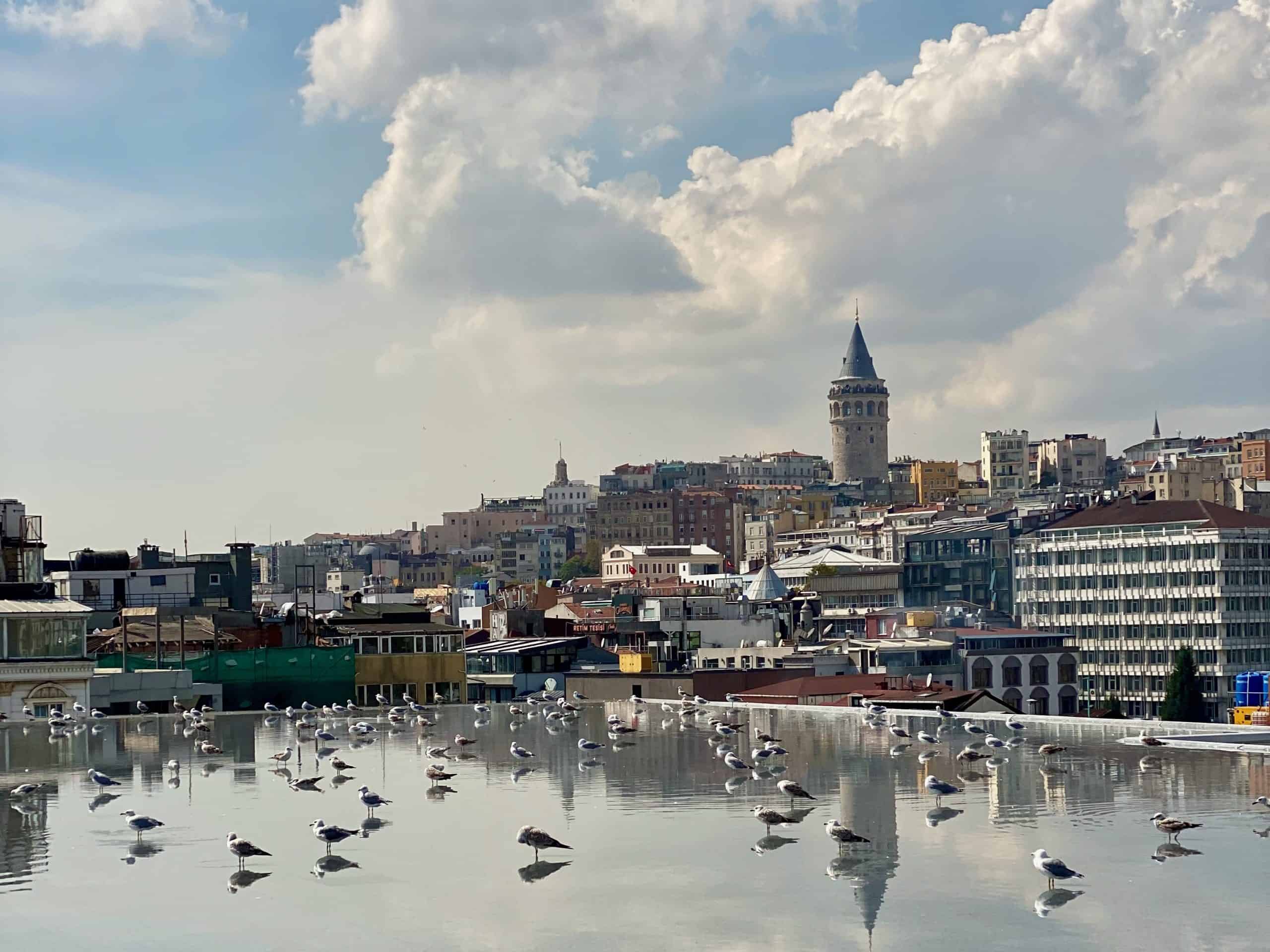
Istiklal Street
Istiklal Street spans approximately 1.4 km starting in the Pera area and culminating in Taksim Square. After exiting the Galata Tower, head to Galip Dede Street, which shortly converts into Istiklal Street.
One of the most famous avenues in Istanbul, it is lined with shops, restaurants and graced with a multitude of pedestrians at all times.
This is a great time to do some souvenir or personal shopping or simply stroll around and people watch at the end of the day.
Turkish Fashion Brands on Istiklal Street:
Mavi Jeans, LC Waikiki, ADL, DeFacto
Istiklal Street mostly offers high street fashion brand for mid-range and luxury brands go to Galataport, Nişantaşı and Bağdat Avenue
Then end your day with a culinary experience at Yeni Lokanta or Mürver.
Yeni Lokanta is located on one of Istiklal Street’s side streets. It offers a modern and creative spin on traditional Turkish dishes. There is the option for a tasting menu or to pick a few a la carte dishes to share and have a taste of various Turkish flavors.
Mürver is located on the rooftop of the Novotel near Galataport. It is known for its year-round burning fire, yielding exquisitely smoky dishes. The restaurant also offers beautiful views of the Bosphorus and the historical peninsula.
Day 3: Spice Bazaar, Grand Bazaar, Suleymaniye Mosque, Fener and Balat
On the last day, return to the historical peninsula. The starting point will be Eminönü. The closest station is the T1 tram with the same name, Eminönü.
How to reach Eminönü:
- From Galata, Cihangir and Karaköy: take the T1 tram from Galata Bridge or Tophane station to Eminönü station
- From Beşiktaş, Üsküdar and Kadıköy: take the ferry to Eminönü from the local pier named after the area (i.e. Beşiktaş Pier, Üsküdar Pier or Kadıköy Pier )
Spice Bazaar
Located right on Eminönü Square, the Spice Bazaar is a significantly smaller bazaar when compared to the Grand Bazaar, since its purpose was focused on the sale of spices.
In Turkish, it is also known as the ‘Egyptian Bazaar’. As with many things in Istanbul, there are multiple stories surrounding the name. There are those who say that it was given because most of the goods sold in the bazaar came from Egypt, while others suggest that the reason is to commemorate the construction, which was possible because of Ottoman taxes collected from Egypt.
There are approximately 130 shops but only a few still sell spices, many of the shops now offer a wider variety of goods catering to tourists.
Pro Tip for the Spice Bazaar & Grand Bazaar:
The prices provided will typically be inflated because most of the shops expect you to bargain. There are shops that have standard pricing, and they will let you know when that is the case, but do not be afraid to assume that you should try to bargain in most places.
A key bargaining chip will be your ability to pay with cash rather than credit card. If you have the possibility, carry cash for your shopping in the bazaars.
Grand Bazaar
The Grand Bazaar will be a 10-minute walk from the Spice Bazaar.
On your way up, you may notice that the streets outside of the Grand Bazaar are also lined with shops. You might find locals shopping for anything from tea cups to wedding dresses. The Grand Bazaar has mostly become a tourist attraction, therefore, the shops inside have higher prices, and more shops now provide souvenirs over household items, leading locals to shop elsewhere. That being said, when it comes to jewelry and particularly gold and diamonds, the Grand Bazaar is still a favorite.
Being in the Grand Bazaar is a unique experience. In the past, it was the hub of trade on the Silk Road, bringing together items from different corners of the world.
It is usually exciting, but don’t feel bad if you find yourself feeling overwhelmed, for it usually is part of the experience. After all, there are about 4000 shops inside the Grand Bazaar with an extensive offering of trinkets and luxuries.
Below you can find a list of traditional Turkish crafts to look out for during your visit to the bazaar.
Traditional Turkish Crafts:
- Kilim rugs
- Cotton towels
- Iznik tiles and ceramics
- Miniature art
- Turkish delight or lokum, coffee and spices
Before leaving the Grand Bazaar grounds, consider stopping for a quick bite at a famous and delicious döner kebab stand just outside the covered grounds of the Bazaar, Dönerci Şahin Usta. There is usually a queue, but it will not take long to get your meal. I stop anytime I am in the area.
Suleymaniye Mosque
Suleymaniye Mosque is a 10-minute walk from the Grand Bazaar. It is one of the most beautiful mosques in Istanbul and is situated on a hill boasting a beautiful view of the Golden Horn from its gardens.
The mosque is named after the ruler who commissioned it, Suleiman the Magnificent, and was designed by one of Turkey’s most revered architects, Mimar Sinan. Some consider it to be his greatest work and one of the grandest exhibitions of Ottoman architecture.
Despite being one of the most popular mosques in Istanbul it retains a local and relaxed ambiance.
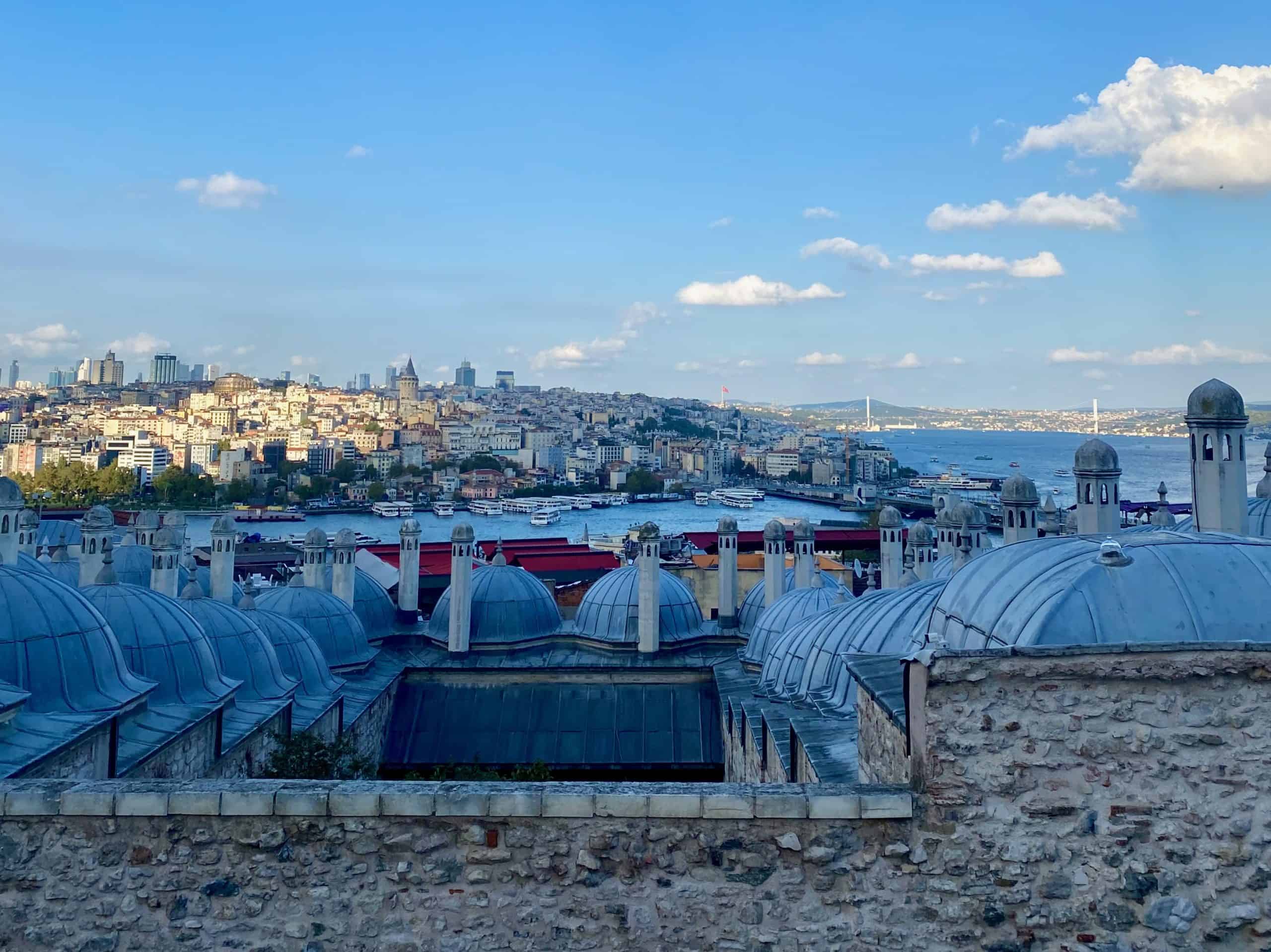
There are often students, friends, or families sitting in the garden enjoying good weather, company, and the lovely views of the city. While there are many people and tourists visiting, there is no queue to get in, as is the case in other grand mosques of Istanbul.
Near the garden, you will also find the mausoleums of Suleiman the Magnificent and his beloved wife Hurrem Sultan. The story of the two is an Ottoman-era Cinderella story. Hurrem Sultan arrived in the palace harem as a slave and concubine, but would go on to become one of the most influential and controversial women in Ottoman history.
Ottoman rulers had many concubines in the palace harem and would produce heirs with multiple women, however, it was not common practice to marry them. That is why when Suleiman the Magnificent held a ceremony to officially marry Hurrem Sultan, the news shook the city of Istanbul.
Confidants and lovers, there is evidence from letters and changes in the Ottoman state to corroborate this legendary love story. You can read more on their story here!
Fener and Balat
Fener and Balat are two of the most charming neighborhoods in Istanbul. Located further inside the Fatih district, it will be best to take a taxi or public transportation to reach them. From Suleymaniye Mosque, walk down towards the Golden Horn to take the T5 tram. The name of the station is Küçükpazar, with the destination being Fener station.
Fener and Balat are a splash of colors that seem impossible together but create a captivating charm.
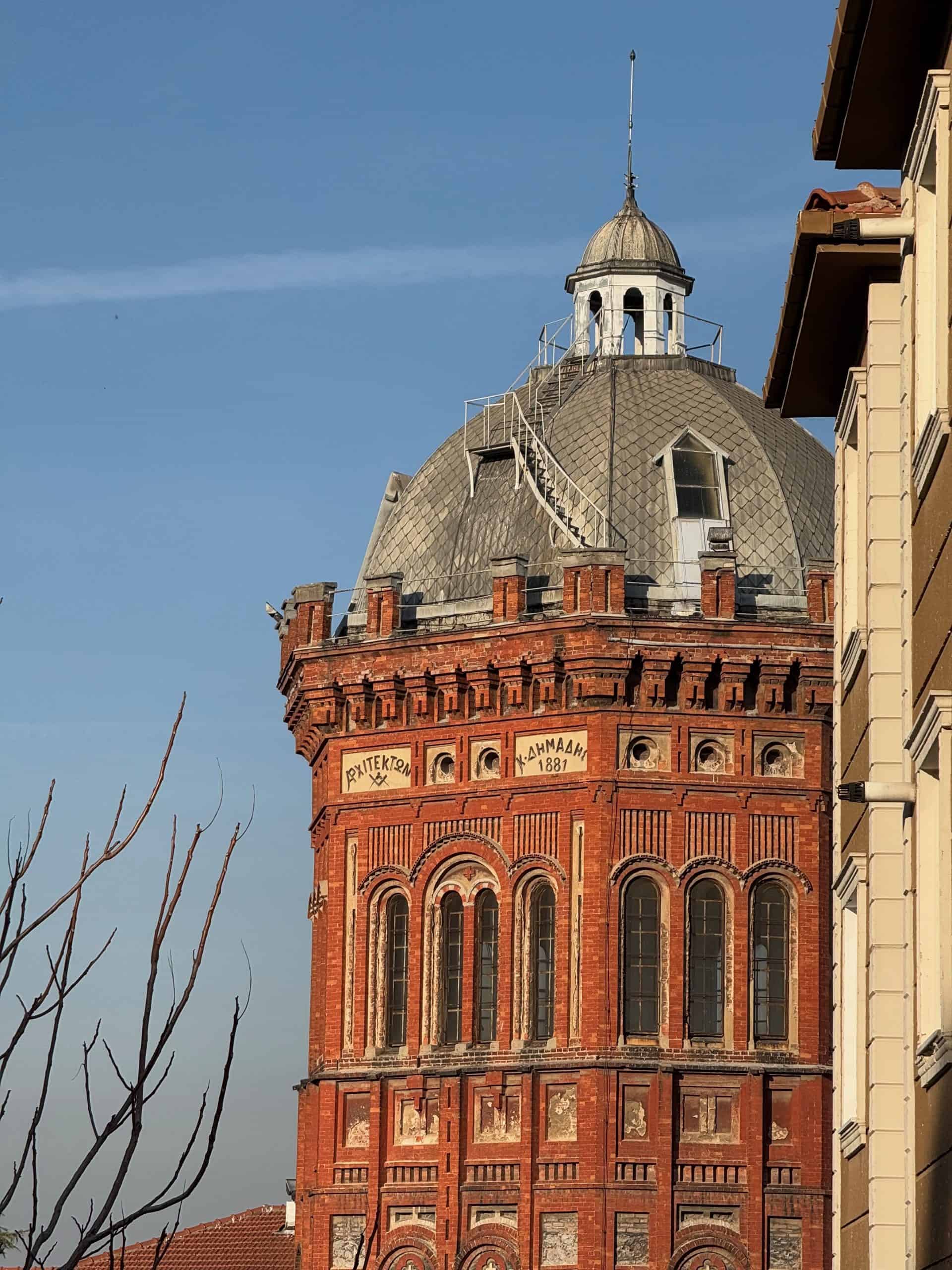
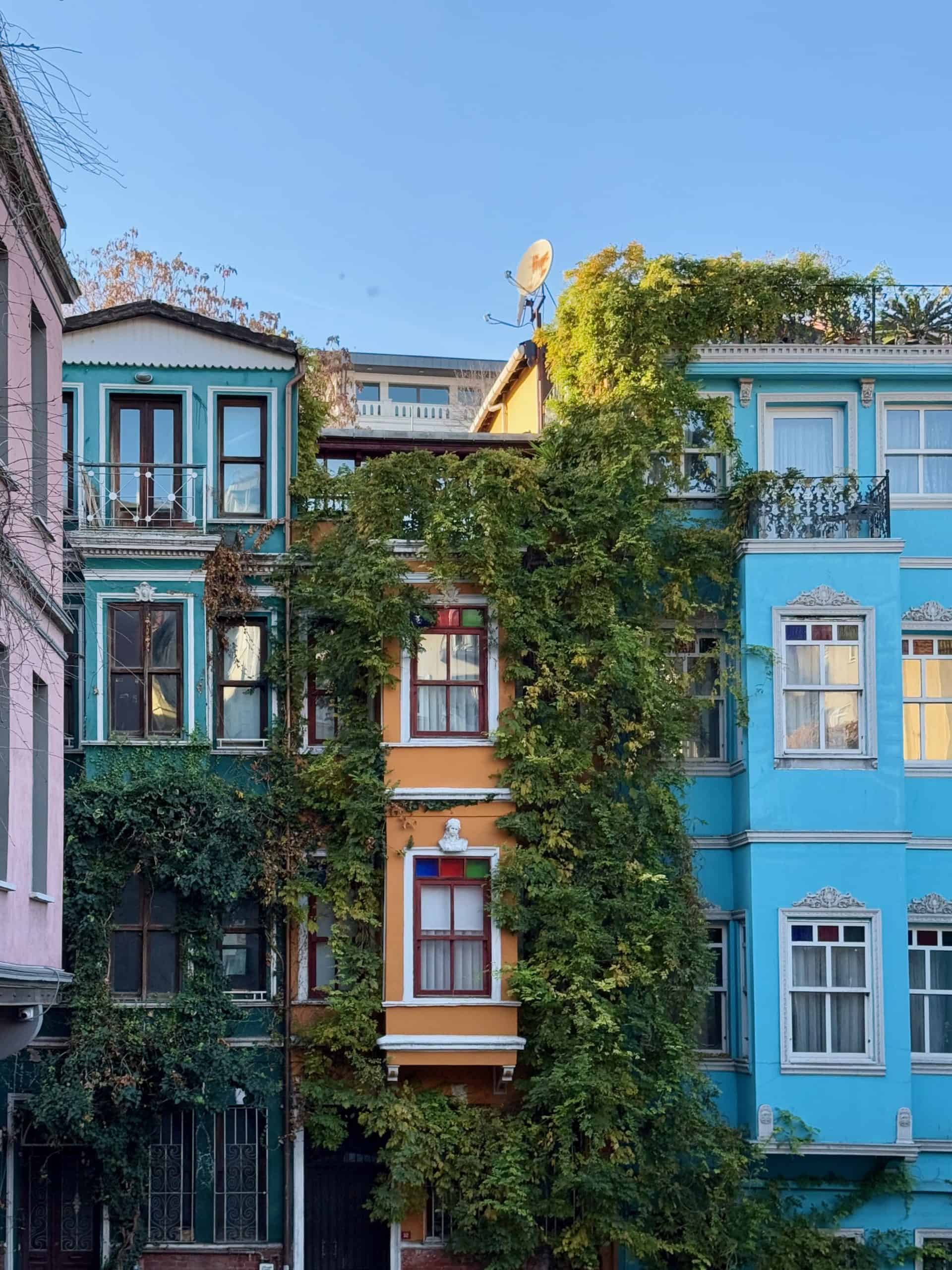
Fener became the home to the Greek Orthodox population of Istanbul after the fall of the Byzantine Empire.
The Church of St. George in the area is still home to the spiritual leader of the Eastern Orthodox Church. The Ecumenical Patriarch of Constantinople, as the spiritual leader is known, can be said to be equivalent to the Pope for Roman Catholics, making Fener the equivalent of the Vatican. Another iconic monument that is associated with the neighborhood and marks its Greek Orthodox roots is the beautifully imposing Phanar Greek Orthodox College, also referred to locally as The Red School.
Balat was once a refuge to Jews fleeing Spain, and Christian minority groups welcomed by the Ottoman ruler at the time. Unfortunately, many of the minority groups were driven out by genocides undertaken in later stages of the Ottoman Empire. Despite that, there are still a few synagogues and churches that remain in the area, like the Bulgarian Iron Church and the Ahrida Synagogue.
Balat has attracted attention throughout time. Its rich diversity is recorded by travel writers as striking, Armenians, Greeks, Ladino speaking Jews and Muslims coexisting in one place.
In recent years, interest in the neighborhood has flourished, and it is now popular for its colorful and antique houses.
The best way to explore Balat and Fener is by foot. These neighborhoods are charming because they retain their old Istanbul feel. That means that there are many small winding streets, and walking around allows for a more immersive experience. The Hello Graciano blog post on these neighborhoods offers great walking routes.
Whether you take the short or long options, the colorful sights will surely adorn your memories of magical Istanbul.
Where to Stay in Istanbul?
When planning your visit to Istanbul, the first instinct might be to stay in the historical peninsula, but as host to many tourist attractions and markets, it tends to be more crowded and hectic than other areas in the city.
The Galata area, while popular amongst tourists, has a lively, relaxed feel. There are many terraces and cafes with outdoor seating along its cobbled streets, giving it a European aspect.
Historically Significant Hotels (high-end)
- Pera Palace Hotel : it was originally constructed to host passengers of the famous Orient Express, including the writer Agatha Christie.
- Georges Hotel Galata : the building originally belonged to the founder of the first modern psychiatric hospital in the Ottoman Empire. After being abandoned, it became a chandelier workshop before being restored in 2011 with the help of one of Turkey’s leading architects.
Boutique Hotels (mid-range)
- Meroddi Galata Mansion : located on the same charming street as the Georges Hotel, the hotel is only a few meters from the Galata Tower and has a pleasant coffee shop, thinning the line between Paris and Istanbul.
- Ali Pasha Apartment : on a quaint little street, also home to a beautiful Crimean Memorial Church that can be visited. The apartments have balconies that overlook the quaint street, church, and a glimpse of the Bosphorus.
What is the best area to stay in Istanbul?
There are many beautiful areas in Istanbul, each with a unique charm. But I’ve found that when spending a long weekend in Istanbul, the best areas will be those that are best connected to the key sights.
The best areas are Galata, Cihangir, Tophane, Karaköy, Nişantaşı and Kadıköy.
Getting Around Istanbul
Istanbul is a huge city and prone to heavy traffic. While touring the city, it is usually best to take public transportation over taxi services.
Public transportation is clean, reliable, and safe. It also ranges from modern metros and trams to scenic ferry rides.
Uber in Istanbul is not recommended, mostly because it is not reliable. Unlike in other countries, Uber in Istanbul is only supplied by taxis rather than private drivers. The recommended alternatives if a car is needed will be BiTaksi and iTaksi. You can find my detailed guide to Uber in Istanbul here.
When hailing a taxi off the street always ask the driver to start and use the meter to avoid any surprises.
Getting in and out of Istanbul is more efficient by car or bus rather than the metro. Istanbul Airport is well connected to the European side of Istanbul by metro, but can be convoluted elsewhere. The best option will be to take a taxi, hire a private transport ahead of time, or take a HavaBus.
Best Tours and Activities in Istanbul
This Istanbul travel itinerary includes a few sites where it is recommended to get tickets ahead of time given the long queues and long wait times to purchase onsite.
- Hagia Sophia Skip-the-Line Ticket and Audio Guide
- Galata Tower Entry Ticket
- Basilica Cistern Fast-Track Entry and Audio Guide
Museum Pass is available and might be worth it when visiting multiple museums. From the itinerary provided, only Topkapı and the Galata Tower are included, so it is not worth it. But if you plan on squeezing in other museums or are traveling to other parts of Turkey, it could be a good option.
Where to Eat in Istanbul?
Turkey is a country abundant in diverse flavors and culinary creations. There is much to be discovered from its street food to some of the best restaurants in the world.
Below are the restaurants highlighted in the itinerary, as well as a few additional options.
Breakfast and Lunch:
- Van Kahvaltı Evi (Cihangir area): best to experience a traditional Turkish breakfast.
- Dönerci Şahin Usta (near Grand Bazaar): try an authentic Turkish döner.
- Salon Galata (Galata area): not in the itinerary, this is a good breakfast or lunch option offering a modern twist to traditional Turkish dishes.
Dinner:
- Muutto Street Food (Kadıköy area): offers tapas-style plates using creative ingredients. Featured on Time Out Magazine.
- Çiya Sofrası (Kadıköy area): a staple and one of the most famous restaurants in Istanbul serving traditional Turkish dishes. Part of the 50 Best Restaurants in the World.
- Yeni Lokanta (near Istiklal Street): offers a creative and refined menu of revitalized Turkish flavors. Part of Istanbul’s Michelin guide restaurants and 50 Best Restaurants in the World.
- Mürver Restaurant (Karaköy area): known for its open wood fire culinary creations and a lovely view of the Bosphorus and Golden Horn. Part of Istanbul’s Michelin guide restaurants.
- Ahali Tesvikiye (Nişantaşı area): offers a modern upscale version of a traditional Turkish meyhane experience. Popular amongst locals.
- Foxy (Nişantaşı area): known for its offering of exquisite Turkish wines, the food served in tapas style is equally delectable. Part of Istanbul’s Michelin guide restaurants.
Sweets
- Karaköy Güllüoğlu (Karaköy): one of the best places in Istanbul for baklava.
- Hafiz Mustafa (multiple locations): known for Turkish delight.
Additional FAQ’s
Is Istanbul safe to visit?
Yes, Istanbul is safe to visit. Whether you are a family, a group of friends or even a solo female traveler, it is safe. Turkish people are usually incredibly helpful, and Istanbulites particularly like to share their culture with visitors because they are overall proud of their city and history.
Of course, like any large city, exercise normal precautions.
What is the best time of year to visit Istanbul?
The best time to visit Istanbul is between April and June and between September and November. April welcomes the spring with the bloom of tulips, and November is the month with fewer tourists but a relatively pleasant climate.
The summer months, particularly between July and August, aside from drawing a larger number of visitors, are also significantly high in temperature, which can make the experience of touring less enjoyable.
How many days do you need in Istanbul?’
It depends. Istanbul is an immense city, so you could very well spend weeks touring it, but ideally, spending 3 to 7 days in the city gives you plenty of time to see the grand city.
The itinerary provided is for 3 days in Istanbul and already covers the highlights, so with a few extra days, you simply open time to explore lesser-known neighborhoods and sites.
Is Istanbul worth visiting?
Absolutely! It is a city like no other that has been coveted like a precious gem by the most glorious empires. Monarchs, ambassadors, and travel writers have left unbelievable accounts of the beauty of the city.
In modernity, it offers different charms for every traveler, rich history, striking architecture, exquisite cuisine, splendid artisanal goods, vintage or new fashion finds, and views honoring the coexistence of human craft and nature.
How is the internet connection in Istanbul?
Internet connection in Istanbul is quite good overall, with most hotels, restaurants, and cafes offering fast-speed wi-fi.
For personal internet, Airalo is a company that offers affordable and reliable e-sims for travelers, which can be a good option to stay connected throughout your trip.
Final Thoughts
While there are many things to see in only a few days, 3 days in Istanbul will allow the city to slowly reveal itself. Whether you’re drawn to architecture, food, vintage finds, or simply looking to explore a new place, Istanbul will find a way to captivate you.
This itinerary highlights some of the city’s most iconic sites, but part of Istanbul’s charm lies in the moments spent wandering. That’s why each day includes a little time to stroll and observe the world around you.
Istanbul’s enchanting colors and siren waters will likely remain in your memories long after your visit ends.

